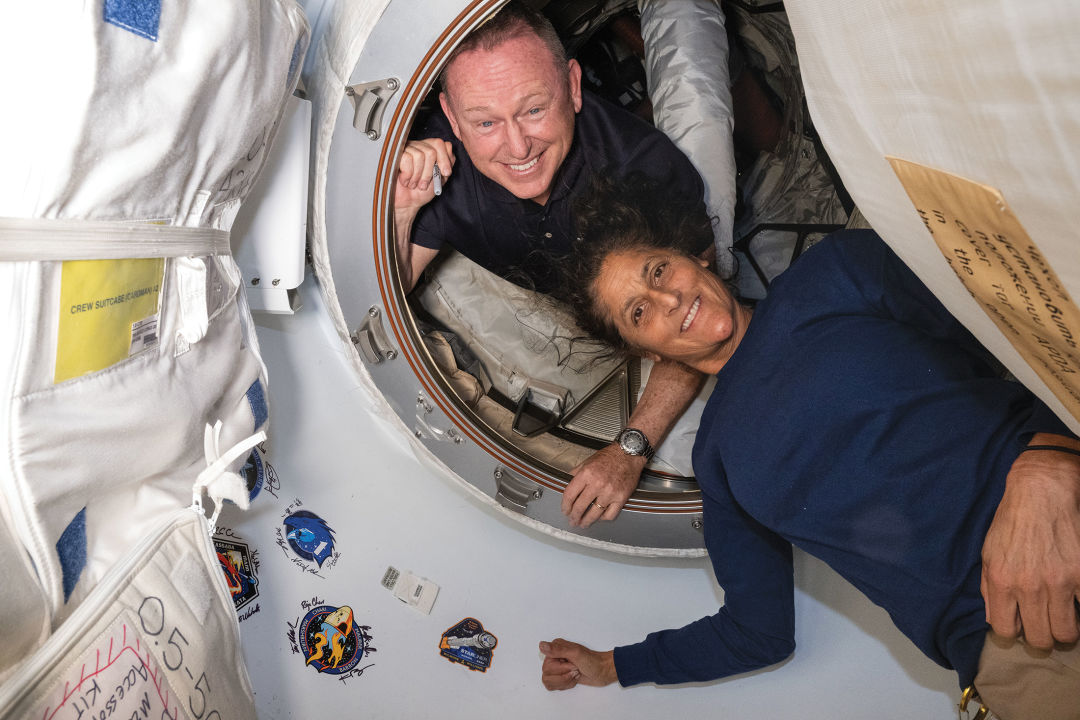Astronauts have been on the ISS longer than anticipated, nevertheless it might not be so unhealthy.
In June 2024, NASA astronauts Suni Williams and Butch Wilmore launched to the Worldwide Area Station (ISS) aboard Boeing’s Starliner for what was presupposed to be a two-month mission. What occurred since then has taken many people civilian earthlings unexpectedly. Helium leaks and issues with the spacecraft’s thrusters meant the capsule couldn’t safely deliver them house as deliberate, so NASA made the choice to deliver Starliner again to Earth in September 2024…and not using a crew.
That call left Williams and Wilmore in house months after their meant return, and on the station longer than anybody had anticipated. At first, NASA officers had hoped that Starliner is perhaps prepared for a crewed return by early 2025, however the spacecraft’s technical hiccups proved extra sophisticated, making the company pivot to a return aboard the SpaceX Crew-9 mission. In keeping with a NASA assertion shared with Houstonia, this new plan means the 2 astronauts will “return to Earth no sooner than late March,” when Crew-9 is anticipated to depart.
Within the meantime, NASA says each astronauts have taken on full expedition duties aboard the station, remaining busy with every little thing from scientific analysis to routine upkeep. They’re additionally nonetheless discovering time to interact in extravehicular actions (EVAs), generally referred to as house walks, that are important for upgrades and repairs on the getting older outpost. The company emphasised that Williams and Wilmore have been conscious of the “prospects and unknowns,” significantly as every accomplished earlier long-duration missions and served as US Navy officers earlier than becoming a member of the group.
The thought of an prolonged mission may appear overwhelming, however seasoned house vacationers perceive that life in orbit isn’t as chaotic because it seems from afar. Dr. Bernard A. Harris Jr., a veteran astronaut who accomplished two NASA missions and even carried out a six‐hour house stroll throughout one of many journeys, remembers the stability of labor and reflection that makes house life each difficult and unexpectedly serene.
“I can’t consider a greater place to replicate than to be across the globe at 17,500 miles an hour and looking out down on the Earth,” Harris says.

Astronauts Suni Williams and Butch Wilmore aboard the ISS.
Area crews additionally deliver a chunk of house with them. Private gadgets—pictures, letters, an iPad with video video games, even a favourite guide or two—assist remind them of the life ready again on Earth. These private touches go a good distance in protecting spirits excessive throughout these lengthy months. Moreover, if you’re orbiting earth each 90 minutes, having a little bit reminder of your roots can really feel fairly grounding.
“What retains you mentally sound is a stability between the exercise that you simply’re accountable for finishing up and the time allotted for relaxation,” Harris says. “We even have a devoted locker [with] issues we need to deliver again. Momentos for individuals we care about like associates, household, [and] establishments we now have been a part of.”
Then there are the small joys solely a handful of people ever get to expertise. Watching 16 sunrises and sunsets a day. Floating from one module to a different like a superhero. Aweing on the wonderful ball that’s Earth. However what precisely are these moments like if you’re up there for much longer than deliberate and the fun of microgravity wears off?
For astronauts like Williams and Wilmore, construction is essential. Each day aboard the ISS is meticulously deliberate by mission management, making certain that astronauts keep productive whereas additionally getting the required downtime to relaxation, train, and talk with family members.
Even with their packed schedules, one of many largest challenges of an prolonged keep in house is protecting the physique in high form. With out gravity pulling them down, astronauts expertise fast muscle and bone loss—about 1 % of bone density monthly—which is why NASA requires strict train regimens.
“If you go into microgravity, the physique tries to adapt to that,” Harris says. “As a consequence, we lose bone, we lose muscle attributes, our coronary heart will get smaller, blood circulation goes down, [and] our means to struggle diseases is muted. It’s referred to as Area Adaptation Syndrome.”
Williams and Wilmore’s state of affairs just isn’t an outlier. Previous circumstances, equivalent to Frank Rubio’s record-breaking 371-day mission ending in September 2023, have proven that with the proper help, astronauts can adapt to those extended stays. Plus, long-duration missions like this supply essential insights into how people may sooner or later dwell and work in house for prolonged intervals. As NASA shifts its focus towards long-term lunar stays and eventual missions to Mars, each further month Williams and Wilmore spend in microgravity helps researchers refine what it is going to take to maintain people bodily and mentally sturdy on journeys that would final years. Whether or not it’s fine-tuning experiments on plant progress or making certain that the station’s programs are operating easily, each activity they full brings NASA one step nearer to securely sending mankind deeper into house.
“They’re encouraging me with the grace they’ve proven in coping with the issues they’ve had with their automobile and the modifications they’ve needed to undergo and adapt,” Harris says. “They’re demonstrating how resilient we’re as individuals, and I simply need to say thanks. They’re examples to all of us, as to what we could be and what we are able to accomplish.”

